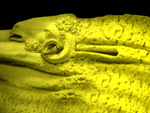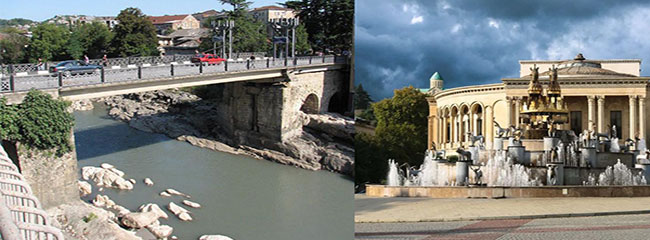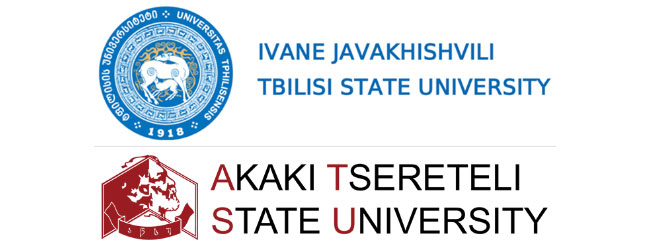Ivane Javakhishvili Tbilisi State University
Akaki Tsereteli State University
9th International Caucasian Symposium on Polymers and Advanced Materials
Dear Colleagues, the 9th International Caucasian Symposium on Polymers and Advanced Materials is scheduled to take place from 20th to 23rd October 2025 in Kutaisi, at
Akaki Tsereteli State University
. The event is being organised by
Ivane Javakhishvili Tbilisi State University
. The objective of the conference is to encourage scientists working in the field of polymer and advanced chemistry to present their investigations dedicated to problems and discoveries in the aforementioned domains. Additionally,
ICSP
&
AM 9
will serve as a platform for the effective introduction of innovative scientific research conducted by Georgian and Caucasian scientific teams, which currently lack global recognition. The conference is expected to facilitate the advancement of polymer science and contribute to the resolution of pressing global challenges. The conference will facilitate the establishment of new international collaborations and the initiation of joint research projects. Furthermore, the conference will provide an invaluable opportunity for scientists from around the globe to experience the charm of Georgia. Georgias area spans approximately 70,000 sq km, with a population of 5.5 million. It is situated in the central and western regions of Transcaucasia. The countrys westernmost point is the Black Sea. The topographical characteristics of Georgia are predominantly mountainous. The countrys topography is characterised by the presence of the Greater Caucasus Mountain system, which demarcates the transition between two distinct climatic zones: a moderate and a subtropical climate. The country is characterised by a substantial network of rivers, which flow into the Black and Caspian seas. Its geographical boundaries are defined as follows: in the northern region, it shares a border with Russia; in the southern region, it is bordered by Armenia and Turkey; in the south-eastern region, it is bordered by Azerbaijan; and in the western region, it is bordered by the Black Sea. Georgia is endowed with abundant mineral resources. The country boasts approximately 1000 mineral springs, each exhibiting unique chemical compositions. The most notable of these are the springs at Borjomi. Georgia is also a major producer of wine, with four hundred varieties of grape cultivated in the country.
|
About Georgia Georgia is the ancient country with more than 25 century history. The capital city Tbilisi (where the conference takes place) is capital from 6th century. In Georgia you can find a lot of historical monuments. The Georgians themselves tell the following story about how they came to possess the land they deem the most beautiful in the world. When God was distributing portions of the world to all the peoples of the Earth, the Georgians were having a party and doing some serious drinking. As a result they arrived late and were told by God that all the land had already been distributed. When they replied that they were late only because they had been lifting their glasses in praise of Him, God was pleased and gave the Georgians that part of Earth he had been reserving for himself. |
|
|
Oldest Human Georgia is the homeland of the oldest human who ventured out of Africa and traveled to Europe. In 1999 and 2001 in Dmanisi, Georgia, was found fossil hominid skulls and jaws.
The town of Dmanisi is first mentioned in the 9th century as a possession of the Arab emirate of Tbilisi, though the area had been settled since the Early Bronze Age.
An Orthodox Christian cathedral – “Dmansis Sioni” – was built here in the 6th century. Located on the confluence of trading routes and cultural influences, Dmanisi was of particular importance, growing into a major commercial center of medieval Georgia. The town was conquered by the Seljuk Turks in the 1080s, but was later liberated by the Georgian kings David the Builder and Demetrios I between 1123 and 1125. The Turco-Mongol armies under Timur laid waste to the town in the 14th century. Sacked again by the Turkomans in 1486, Dmanisi never recovered and declined to a scarcely inhabited village by the 18th century.
|
The Alphabet There are only 14 different alphabet in use in modern world and one of them is Georgian.
 The Georgian alphabet is the script currently used to write the Georgian language and other Kartvelian languages (such as Mingrelian), and occasionally other languages of the Caucasus (such as Ossetic and Abkhaz in the 1940s).
The modern Georgian alphabet has thirty-three letters. Originally it had more, but some letters have become obsolete.
The Georgian script makes no distinction between upper and lower case.
Georgian historical tradition attributes the invention of the Georgian alphabet to Parnavaz I of Iberia in the 3rd century BC.
There are other interpretations. One of the more contentious is that the similar alphabet called as asomtavruli was invented in 412 BC by Georgian priests of the cult of Matra (Persian Mithra), and reformed in 284 BC by king Parnavaz I of Iberia.
|
The Golden Fleece
Ancient Greek legends told of a fabulously wealthy land where Jason and the Argonauts stole the Golden Fleece from King Aetes with the help of his daughter Medea. It was a distant land that was reached by the Black Sea and down the River Phasis. The actual site of this legendary kingdom has never been found but the Greeks must have been greatly impressed by the Colchis region of Georgia, through which the River Phasis (currently the Rioni River) runs, for such stories to have been born.
|
|
Georgia is one of the most ancient countries in the world with an uninterrupted tradition of viticulture and winemaking. In fact, cultivated grape pips were discovered that indicate that Georgia has been making wine for some 8000 years, leading experts to believe that Georgia is the birthplace of wine. Numerous artefacts dating back IV-III and older have also been found adding evidence to the fact that Georgia is probably the oldest wine country in the world.
525 indigenous grape varieties of Georgia. Nowadays, about 25 varieties are used in the industry.
Georgian winemaking – The Qvevri (clay vessel used for fermentation of wine) Method is listed as part of UNESCO Intangible Heritage.
Viticulture is an integral part of Georgia’s history. Saint Nino of Cappadocia came to enlighten Georgia with a cross, made of a vine. Even today the vine remains one of the symbols of Christianity in Georgia. It is interesting to note that in the 11th century, in Ikhalto Academy (Kakheti, East Georgia), among others, winemaking was taught. In those times Georgian wine was considered as rather expensive product and was exported abroad in large quantities. Wine was made according to ancient recipes and traditions.
Georgian wine-making history is connected directly to the history, culture and religion of Georgian people. Georgian creative nature and particular love for vine and wine were expressed in Georgian habits, architecture, painting, poetry, songs and other fields of art. History confirms that there existed about 500 breed of grapes on the territory of Georgia. Nowadays 27 of them are remained and widely used.
For Georgian viticulture and winemaking, correct use of unique climate conditions and preserving centuries-old experience and wine production methods is highly important. In Georgia, a country with rich culture of wine-growing and wine-making, the tradition of using the geographical name of the place of origin as the appellation controlled of a wine has a long history. Traditionally, Georgian wines carry the name of the source region, district or village.
Depending on the color of wine is divided into White, Pink and Red. It depends not only on the type of grape used, but also on the technology of wine.

|
 |







